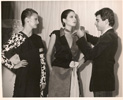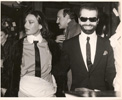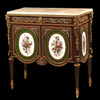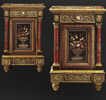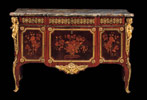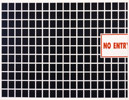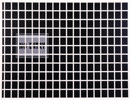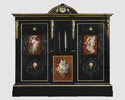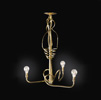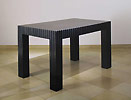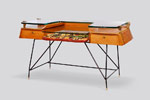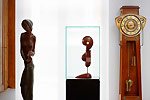Biography
Setting the record straight
Roberto Polo has been in the limelight for nearly half a century. Virtually everything and anything has been said and written about his rise, fall and resurrection. Roberto’s life is such an astonishing chain of surreal events that should he recount it one day, readers who do not know him personally would probably doubt its authenticity. The purpose of this brief biography is to set the record straight. Key documents substantiating the facts narrated herein are accessible from within this text and in the Documents section of this website. However, there are many more which are equally as revealing.
Family background

Roberto Polo, an American citizen, was born Roberto Bernardo Polo Castro in Havana, Cuba, on August 20th, 1951. He is the oldest son of Roberto Isaac Polo Perdueles, born in Cárdenas, province of Matanzas, 

 Cuba, in 1923, and María-Teresa Julia Castro Carluch, born in Havana in 1926. They married in Havana in 1949. The family name Castro is a common Spanish name of Galician origin.
Cuba, in 1923, and María-Teresa Julia Castro Carluch, born in Havana in 1926. They married in Havana in 1949. The family name Castro is a common Spanish name of Galician origin.
 Some of Roberto Polo’s ancestors merit mentioning. His maternal great-grandfather, the composer, conductor and musician renowned as Maestro Chané, was born José María Castro González in Santiago de Compostela, Spain, in 1856. His first music teacher was his father, the virtuoso concert guitarist Juan de Castro. Chané was decorated by the French composers Charles Gounod and Ambroise Thomas at the Ancien Palais du Trocadéro on the occasion of the 1889 Paris Exposition Universelle.
Some of Roberto Polo’s ancestors merit mentioning. His maternal great-grandfather, the composer, conductor and musician renowned as Maestro Chané, was born José María Castro González in Santiago de Compostela, Spain, in 1856. His first music teacher was his father, the virtuoso concert guitarist Juan de Castro. Chané was decorated by the French composers Charles Gounod and Ambroise Thomas at the Ancien Palais du Trocadéro on the occasion of the 1889 Paris Exposition Universelle.
 Chané married Elvira Hernández Célis, who was born in Ferrol, Spain, in 1864. In 1893, anti-royalists, they migrated to Havana, where they led a rich intellectual and musical life.
Chané married Elvira Hernández Célis, who was born in Ferrol, Spain, in 1864. In 1893, anti-royalists, they migrated to Havana, where they led a rich intellectual and musical life.  Chané and Elvira died in Havana. He, in 1917, and she, in 1960. Spain, considering Chané one of its great composers claimed his body. He is buried in the cemetery of La Coruña under a monumental tomb near to his friend the great Galician poet Manuel Curros Enríquez.
Chané and Elvira died in Havana. He, in 1917, and she, in 1960. Spain, considering Chané one of its great composers claimed his body. He is buried in the cemetery of La Coruña under a monumental tomb near to his friend the great Galician poet Manuel Curros Enríquez. 
 The house where Chané was born is also a monument and the carillon of La Coruña plays some notes of one of his most popular airs every time the clock strikes the hour.
The house where Chané was born is also a monument and the carillon of La Coruña plays some notes of one of his most popular airs every time the clock strikes the hour.
Roberto Polo’s maternal grandfather, Mario Castro Hernández, was born in Havana in 1897, and died in exile in Miami in 1978. Mario studied at the Academia Naval  in Mariel, province of Pinar del Rio, Cuba, and became a Capitán de la Marina Mercante, Comandante de la Marina, Comandante de la Marina de Guerra, political activist and a revolutionary against the Cuban dictator Fulgencio Batista.
in Mariel, province of Pinar del Rio, Cuba, and became a Capitán de la Marina Mercante, Comandante de la Marina, Comandante de la Marina de Guerra, political activist and a revolutionary against the Cuban dictator Fulgencio Batista.  He hid from the Batista police for two years in a closet in a friend’s home, only leaving it at night, when the domestic staff retired to their quarters. Mario was also a professional operatic tenor, well-remembered for his interpretation of the artist Mario Cavaradossi in Giacomo Puccini’s Tosca. He was a profoundly cultivated man, who taught Roberto much about art and music.
He hid from the Batista police for two years in a closet in a friend’s home, only leaving it at night, when the domestic staff retired to their quarters. Mario was also a professional operatic tenor, well-remembered for his interpretation of the artist Mario Cavaradossi in Giacomo Puccini’s Tosca. He was a profoundly cultivated man, who taught Roberto much about art and music.

María-Teresa Carluch Avila, Roberto Polo’s maternal grandmother, was born in Mariel in 1898, and died in Havana in 1954. She had Spanish and Italian ancestry. As befitting a young lady of the period, in addition to her Spanish education, María-Teresa learned how to play the piano and the English language from her Irish tutor.

Roberto Polo’s paternal grandfather, Alfredo Ramón Polo Pardo, was born in Corcubión, Spain, in 1896. Alfredo migrated to Havana, where he founded Polotanque S.A., a steel construction company which built tanks for oil refineries in several countries of the Caribbean and Central American regions; rum distilleries in Cuba, Nassau and Puerto Rico; and most of the sugar mills, tunnels and bridges in Cuba. Alfredo left Polotanque S.A. to his sons when he died in 1952, at the age of fifty-six.
 Orosia María Perdueles Expósito, Roberto Polo’s paternal grandmother, was born in Cárdenas in 1902, of Spanish and French ancestry, and died in exile in Miami in 1985. She descended from the Hurtado de Mendoza family, one of the oldest noble families in Spain and Cuba.
Orosia María Perdueles Expósito, Roberto Polo’s paternal grandmother, was born in Cárdenas in 1902, of Spanish and French ancestry, and died in exile in Miami in 1985. She descended from the Hurtado de Mendoza family, one of the oldest noble families in Spain and Cuba.

Roberto Polo’s mother was a beautiful woman with a strong personality. She possessed an exceptional mezzo soprano voice, singled-out from the choir by Herbert von Karajan in Havana, where he conducted Beethoven’s Ninth Symphony.  She ceased singing when she married and encouraged her sons’ artistic careers, Roberto’s in the visual arts and his younger brother’s, Marco’s, in music. Marco studied at The Juilliard School of Music in New York only to abandon it for the New York University School of Business and a successful business career.
She ceased singing when she married and encouraged her sons’ artistic careers, Roberto’s in the visual arts and his younger brother’s, Marco’s, in music. Marco studied at The Juilliard School of Music in New York only to abandon it for the New York University School of Business and a successful business career.
Childhood and Adolescence: 1956-1968
From 1955 to 1957, Roberto Polo attended kindergarten and primary school at Saint George’s School in Havana. While other boys played in the school field, he undertook learning the names and work of all major artists.  Due to his artistic sensitivity, in 1957, Roberto’s parents enrolled him at the Havana Military Academy, where he completed first grade in 1958, second grade in 1959 and third grade in 1960. In this rigorous school of high academic standards, he excelled in his studies and was awarded the highest honours every year at the final school exercises.
Due to his artistic sensitivity, in 1957, Roberto’s parents enrolled him at the Havana Military Academy, where he completed first grade in 1958, second grade in 1959 and third grade in 1960. In this rigorous school of high academic standards, he excelled in his studies and was awarded the highest honours every year at the final school exercises.
 These were strange years for the Polos. In spite of their high standard of living, including a magnificent residence in the new and chic Biltmore neighbourhood, membership in the exclusive Casino Español and vacations in Europe and America, Roberto’s mother hid cousins – anti-Batista revolutionaries –
in their home.
These were strange years for the Polos. In spite of their high standard of living, including a magnificent residence in the new and chic Biltmore neighbourhood, membership in the exclusive Casino Español and vacations in Europe and America, Roberto’s mother hid cousins – anti-Batista revolutionaries –
in their home.
On December 31st, 1958, Batista fled the country and Fidel Castro assumed power. Roberto’s parents withdrew him from the Havana Military Academy after he began fourth grade in 1960. Castro’s government had nationalized the school and imposed an educational system based on Communist indoctrination. They then enrolled Roberto in a succeeding number of schools only to withdraw him shortly after each in turn was nationalized.
This was a traumatizing period for financially affluent Cubans. Roberto Polo remembers shocking events, such as not being able to exit his home: a pile of corpses barred the front door. He also remembers how his family and domestic staff sought shelter nightly from machine gun fire in a protected side of the house. These despicable techniques were used by Castro’s Communist government to intimidate citizens and force them to flee the country in order to confiscate their homes, businesses and other assets.
In the beginning of his dictatorship, Castro convinced many wealthy Cubans to repatriate their funds only to seize them. Roberto’s father was one of his victims. However, he had the foresight to leave a nest-egg in America. This allowed the Polos to start a new life when they fled to Miami in 1961.
Roberto and Marco attended public schools in America. The English language was not a problem for the boys, who had learned it in Havana. Roberto completed fourth grade in 1961 and fifth grade in 1962. His father and paternal uncles pursued their construction business successfully until 1962, when they disagreed and separated. In the same year, the Polos relocated to Lunenburg, Massachusetts, where they lived until 1963, when Roberto completed sixth grade. His father decided to move the family to Lima, Perú, where steel construction for the oil industry was a promising business.
The Polos settled in Lima, first in the neighbourhood of Miraflores and later in San Isidro. Roberto’s parents enrolled him in the Abraham Lincoln School, where he completed seventh grade in 1964 and eighth grade in 1965. Encouraged by his maternal grandfather, Mario, Roberto’s parents also enrolled him at the Estudio-Taller Suarez Vértiz, a private art school owned by Germán Suárez Vértiz, a respected academic painter and former Director of the Escuela Nacional Superior Autónoma de Bellas Artes, and his wife María-Teresa Reyes, a fine painter and art teacher. Roberto studied for only two years with them, because the Peruvian oil industry had been nationalized and the Polos returned to Miami.
In 1965, Roberto Polo showed his paintings to José Gómez Sicre, eminent Cuban art critic, theorist and Director of the Pan American Union’s Visual Arts Department. Impressed by Roberto’s talent, Gómez Sicre asked Mr. and Mrs. Bayard L. England, important American collectors of Latin-American art and benefactors of the Newark Museum of Art, to fund Roberto’s studies at The Corcoran School of Art in Washington D.C., now called The Corcoran College of Art and Design.
 Undecided about whether they should allow Roberto to live alone in Washington at the age of fourteen, the Polos settled briefly in Miami, where Roberto completed ninth grade in 1966. They moved to Falls Church, Virginia, one year later, so that Roberto could pursue his studies at the Corcoran, an independent art school, which was also the Department of Fine Arts and Art History of The George Washington University.
Undecided about whether they should allow Roberto to live alone in Washington at the age of fourteen, the Polos settled briefly in Miami, where Roberto completed ninth grade in 1966. They moved to Falls Church, Virginia, one year later, so that Roberto could pursue his studies at the Corcoran, an independent art school, which was also the Department of Fine Arts and Art History of The George Washington University.  Roberto was able to attend high school only in the morning and art school in the afternoon and evening, because the state of Virginia considered him a child prodigy in art. In 1975, Eugenia Sheppard of The New York Post, who wrote the most widely syndicated column in America, would describe him as an art prodigy.
Roberto was able to attend high school only in the morning and art school in the afternoon and evening, because the state of Virginia considered him a child prodigy in art. In 1975, Eugenia Sheppard of The New York Post, who wrote the most widely syndicated column in America, would describe him as an art prodigy.
These were years of financial hardship for the Polos. Roberto’s mother, whose only previous employment had been as a charitable worker for the Trappists of Emmaus in Lima, teaching home economics to poor Peruvian Indians, now trained as a nutritionist and sought salaried employment for the first time in her life. Since Roberto could not count on his parents’ financial support while studying at the Corcoran, he had worked, since the age of fifteen, in the stockroom of the jewellers, Bailey Banks & Biddle; as a salesman in the jewellery department of The Hecht Company, the American department store; and as a guard and guide at The Phillips Collection in Washington, the first museum of modern art in America, founded in 1918 and opened to the public in 1921.  This wonderful and intimate museum conserves many masterpieces in its collections, including Le déjeuner des canotiers (1881) by Pierre-Auguste Renoir. Roberto used this painting as the subject of a large format mixed media assemblage which he created for the innovative Yucca Restaurant in Coral Gables in 1992.
This wonderful and intimate museum conserves many masterpieces in its collections, including Le déjeuner des canotiers (1881) by Pierre-Auguste Renoir. Roberto used this painting as the subject of a large format mixed media assemblage which he created for the innovative Yucca Restaurant in Coral Gables in 1992.
Roberto Polo graduated from art school in 1968, completing in two years the Corcoran’s four-year Painting Diploma Program. A year later he graduated from high school. Roberto refused to attend his high school graduation exercises, because he felt no attachment to the program. However, he proudly attended those of the art school, where The Ford Foundation awarded him several scholarships.
 Mr. and Mrs. England were proud of their protégé, who thanked his generous benefactors by giving them several of his paintings, which first hung in their home
Mr. and Mrs. England were proud of their protégé, who thanked his generous benefactors by giving them several of his paintings, which first hung in their home  and were exhibited later with the rest of their important collection in the Newark Museum of Art. To reward Roberto, his parents, making great financial efforts, gave him a new Volkswagen Beetle. He surprised them with a ride in his new car, which he parked in a space reserved for the faculty of the Corcoran, where he was appointed professor at the age of sixteen.
and were exhibited later with the rest of their important collection in the Newark Museum of Art. To reward Roberto, his parents, making great financial efforts, gave him a new Volkswagen Beetle. He surprised them with a ride in his new car, which he parked in a space reserved for the faculty of the Corcoran, where he was appointed professor at the age of sixteen.
The legendary Jefferson Place Gallery in Washington was founded in 1957, by a group of artists known as the Washington Color School. Alice Denney was its first Director. Among the artists represented by this gallery were Morris Louis, Howard Mehring, Kenneth Noland and Gene Davis. Nesta Dorrance acquired the gallery from Alice in 1960 and directed it until it closed in the mid 1970s. Nesta had a great talent for discovering artists. In 1967 and 1969, she presented two solo exhibitions of Roberto’s work. The first one consisted of geometric abstractions in acrylic and charcoal on canvas, affirming the two-dimensionality of three-dimensional forms. The second one






consisted of non-figurative organic abstractions, three-dimensional painting or chromatic sculpture, made of welded and painted U-Vex, a kind of plastic. Roberto titled the second exhibition Souvenirs, because he saw these works as materialized memories of a voyage into his self. Both of these exhibitions were covered by the respected art critic of The Washington Post, Paul Richard. Roberto was, by far, the youngest artist in the gallery’s stable. During this period, Roberto also exhibited in group shows at The Corcoran Gallery of Art, The National Collection of Fine Arts of The Smithsonian Institution (which acquired his work) and the Henri Gallery, all in Washington, as well as the Reese Paley Gallery, the first major art gallery in New York’s SoHo district.






Washington D.C., New York and Paris: 1968-1988
The Corcoran was only the beginning of Roberto’s academic education. In 1969,  he enrolled at The American University in Washington to pursue a Bachelor’s degree in Art History and Philosophy, which he received in 1972. He met Federico Suro, his future brother-in-law, in an art history course. Federico introduced Roberto to his father, Darío Suro, an excellent artist. They instantly became close friends.
he enrolled at The American University in Washington to pursue a Bachelor’s degree in Art History and Philosophy, which he received in 1972. He met Federico Suro, his future brother-in-law, in an art history course. Federico introduced Roberto to his father, Darío Suro, an excellent artist. They instantly became close friends.
The Suros came from the Dominican Republic and for political reasons had resided abroad for many years. They were a family of modest financial means. Because Dario was commercially unsuccessful as an artist, he worked as a diplomat. To supplement his salary, his wife, Maruxa, worked as a seamstress in the Alterations Department of Lord & Taylor, the American department store. During Easter of 1971, Roberto met Rosa, their attractive daughter, who lived in New York, where she studied ballet at the Joffrey Ballet School / American Ballet Center. Roberto and Rosa married in New York on March 25th, 1972. Their wedding reception took place in the home and studio of Darío’s friend, Ronnie Elliott, the first artist to do collage in America, a close friend of Max Ernst, Richard Pousette-Dart, Fritz Bultmann and many other influential New York and Paris artists.
 In 1972, Roberto Polo moved to New York and enrolled at Columbia University, where he received a Master in Fine Arts Degree in 1974, and accumulated enough credits in art history to qualify for a doctoral degree. Among his noted professors were Philip Guston, Jack Tworkov and Minoro Nizuma in fine arts, and Theodore Reff, Meyer Shapiro and Alexandra Commini in art history.
In 1972, Roberto Polo moved to New York and enrolled at Columbia University, where he received a Master in Fine Arts Degree in 1974, and accumulated enough credits in art history to qualify for a doctoral degree. Among his noted professors were Philip Guston, Jack Tworkov and Minoro Nizuma in fine arts, and Theodore Reff, Meyer Shapiro and Alexandra Commini in art history.
While in graduate school, Roberto Polo worked at the Rizzoli Bookstore & Gallery, first, as a salesman and then, as the Gallery Director, travelling to Europe regularly to buy art.  He organized several exhibitions, including M.C. Escher, Alphonse Mucha and Erté. However, his best-remembered one is Fashion as Fantasy.
He organized several exhibitions, including M.C. Escher, Alphonse Mucha and Erté. However, his best-remembered one is Fashion as Fantasy.  In 1975, motivated by his friend Charles James, American fashion design genius, Roberto invited fifty-three artists, fashion designers, photographers and illustrators to create pieces especially for this provocative event. Among the participants were the artists Robert Motherwell, Andy Warhol and Les Levine; and the fashion designers Rudi Gernreich, Karl Lagerfeld and Paco Rabanne. Many of the pieces created for Fashion as Fantasy were disconcerting for the time. For example, Motherwell designed four ball gowns inspired by men’s testicles; Warhol presented a clothes rack with dresses composed of fragments cut-out from dresses by different designers; Levine created T-shirts and boxer shorts with the printed motto What can the Federal government do for you?; and Gernreich created wearable art out of bicycle parts. Rizzoli was packed with over twelve-hundred people from all walks of society on the exhibition’s opening night: jet setters, famous and unknown artists, stars and those who thought they were, fashion plates and victims, and art collectors. While the international press either loved or hated the exhibition, they all agreed that Roberto had created a stimulating event which pioneered the concept of fashion as art. In 1975 and 1976, he conducted and wrote interviews of Robert Motherwell, Paco Rabanne and Madame Grès for Andy Warhol’s Interview magazine.
In 1975, motivated by his friend Charles James, American fashion design genius, Roberto invited fifty-three artists, fashion designers, photographers and illustrators to create pieces especially for this provocative event. Among the participants were the artists Robert Motherwell, Andy Warhol and Les Levine; and the fashion designers Rudi Gernreich, Karl Lagerfeld and Paco Rabanne. Many of the pieces created for Fashion as Fantasy were disconcerting for the time. For example, Motherwell designed four ball gowns inspired by men’s testicles; Warhol presented a clothes rack with dresses composed of fragments cut-out from dresses by different designers; Levine created T-shirts and boxer shorts with the printed motto What can the Federal government do for you?; and Gernreich created wearable art out of bicycle parts. Rizzoli was packed with over twelve-hundred people from all walks of society on the exhibition’s opening night: jet setters, famous and unknown artists, stars and those who thought they were, fashion plates and victims, and art collectors. While the international press either loved or hated the exhibition, they all agreed that Roberto had created a stimulating event which pioneered the concept of fashion as art. In 1975 and 1976, he conducted and wrote interviews of Robert Motherwell, Paco Rabanne and Madame Grès for Andy Warhol’s Interview magazine.
In 1976, Roberto Polo learned that Citibank planned to open the first fine art investment department in the banking industry. The relationship between art and business had always fascinated Roberto, who already bought and sold art successfully. He applied to work in the foundation of this department. Since Roberto had no formal business education, he was hired, but had to undergo a two-year financial training program from which he emerged as one of a financial control team that oversaw Citibank’s international branch operations. He was subsequently transferred to the International Services Division of the bank’s Investment Management Group, where he was instrumental in founding the Fine Art Investment Services department. Throughout these years, Roberto and Rosa often appeared in the international press as a successful and fashionable couple. In 1977, Gentlemen’s Quarterly magazine selected him as one of the best-dressed men in New York and was photographed by Bruce Weber for a related article titled The People’s Choice.





Roberto resigned from Citibank in 1981, to incorporate his own investment advisory company, Private Asset Management Group Inc. (PAMG Inc.). Due to his undisputed expertise in art and jewellery, this company specialized in these kinds of investments (PAMG Inc. brochure.pdf). PAMG Inc. was registered as an investment advisor with the Securities and Exchange Commission (PAMG Inc.'s Securities and Exchange Commission Investment Advisor Registration.pdf). Its success allowed Roberto to buy first, a Park Avenue apartment and then, an East side townhouse.
Roberto Polo travelled regularly to Europe and Latin America, where he cultivated important clients and friends. He became a father in 1982, with the birth of his daughter Marina, born ten years after his marriage to Rosa, who did not want offspring. Marina’s birth made Roberto’s dream of becoming a father come true and his marriage increasingly difficult.
From 1982 to 1983, Roberto Polo bought a sizable amount of Sotheby’s stock, unknowingly protecting this internationally renowned auction house from a takeover by Marshall Cogan and Steven Swid of General Felt. Since he had never invested in the stock market and never did again, Roberto saw this more as an art investment. The international press wrote about the Latin-American white knight defending Sotheby’s from the takeover. John Marion, Chairman of Sotheby’s’ Board of Directors, learned over lunch with Roberto of his involvement. He asked Roberto to take Sotheby’s over. Roberto refused. He preferred to sell the stock to a person of Sotheby’s’ choice. Shortly after, the important American businessman, Alfred Taubman, called Roberto and bought his stock.
 In 1983, encouraged by the dramatic fall of the French franc and real estate prices after François Mitterrand was elected president, Roberto Polo bought a pied-à-terre apartment in Paris. His New York townhouse and Paris apartment became showcases for the important and eclectic collections of fine and decorative art which he formed. The market has repeatedly proven that works of art associated with his name increase in value rapidly.
In 1983, encouraged by the dramatic fall of the French franc and real estate prices after François Mitterrand was elected president, Roberto Polo bought a pied-à-terre apartment in Paris. His New York townhouse and Paris apartment became showcases for the important and eclectic collections of fine and decorative art which he formed. The market has repeatedly proven that works of art associated with his name increase in value rapidly.
In 1984, Roberto Polo opened Jacob Frères Limited, the Madison Avenue gallery devoted chiefly to masterpieces of French eighteenth-century art. He also invested in the company of the Cuban-born Milano-based fashion designer Miguel Cruz , highly regarded for his women’s and men’s ready-to-wear collections as well as for his fur and shoe collections. Roberto and Miguel launched a perfume called Le Parfum de Miguel Cruz, selected by the Syndicat national de la parfumerie française as the perfume most likely to succeed in 1989. By 1988, Le Parfum de Miguel Cruz had sold over $ 42 million. Sadly, this business aborted in the same year, when Roberto’s Kafkaesque judicial trials and tribulations began.
, highly regarded for his women’s and men’s ready-to-wear collections as well as for his fur and shoe collections. Roberto and Miguel launched a perfume called Le Parfum de Miguel Cruz, selected by the Syndicat national de la parfumerie française as the perfume most likely to succeed in 1989. By 1988, Le Parfum de Miguel Cruz had sold over $ 42 million. Sadly, this business aborted in the same year, when Roberto’s Kafkaesque judicial trials and tribulations began.
Robert Mapplethorpe’s first fashion advertising campaign was conceived by Roberto for Miguel Cruz.  When these photographs first appeared, many perceived them as offensive. Today they are regarded as revolutionary. Some time later, Mapplethorpe used Roberto’s concept for other work. Roberto was very disappointed.
When these photographs first appeared, many perceived them as offensive. Today they are regarded as revolutionary. Some time later, Mapplethorpe used Roberto’s concept for other work. Roberto was very disappointed.  Consistent with his pioneering eye, he dismissed Mapplethorpe and asked the innovative American photographer, Duane Michels, to photograph the advertising campaign for Le Parfum de Miguel Cruz. This advertising campaign is remembered today for its refined eroticism.
Consistent with his pioneering eye, he dismissed Mapplethorpe and asked the innovative American photographer, Duane Michels, to photograph the advertising campaign for Le Parfum de Miguel Cruz. This advertising campaign is remembered today for its refined eroticism.
Roberto Polo’s reputation as a philanthropist increased the value of the art and jewellery collections he formed. As an American, he had been taught to render to society, in a disinterested manner, some of what it allowed him to earn. This financially and emotionally generous aspect of his personality has incited much envy. 
 In 1986, Roberto gave Marisol’s monumental masterpiece Self-Portrait Looking at “The Last Supper” (1982-1984) to The Metropolitan Museum of Art, where his name is carved in stone. Also in 1986, he gave the important Vase fuseau de Madame Mère
In 1986, Roberto gave Marisol’s monumental masterpiece Self-Portrait Looking at “The Last Supper” (1982-1984) to The Metropolitan Museum of Art, where his name is carved in stone. Also in 1986, he gave the important Vase fuseau de Madame Mère to the Musée du Louvre. This vase was commissioned by Napoléon Ier from the Manufacture de Sèvres in 1810, as a gift to his mother on the occasion of his son’s baptism.
to the Musée du Louvre. This vase was commissioned by Napoléon Ier from the Manufacture de Sèvres in 1810, as a gift to his mother on the occasion of his son’s baptism. 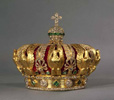 In 1987, Roberto made an important financial contribution for the restoration of the Jeu de paume of the Château de Chantilly and raised other funds throughout the world for the same purpose (Letter from Pierre de Crepy to Roberto Polo.pdf). In 1988, he gave the only existing crown of a French monarch with its original gems to the Musée du Louvre. This crown was commissioned by Napoléon III from the jeweller Alexandre-Gabriel Lemonnier for Empress Eugénie, who wore it at the 1855 Paris Exposition Universelle. Also in 1988,
In 1987, Roberto made an important financial contribution for the restoration of the Jeu de paume of the Château de Chantilly and raised other funds throughout the world for the same purpose (Letter from Pierre de Crepy to Roberto Polo.pdf). In 1988, he gave the only existing crown of a French monarch with its original gems to the Musée du Louvre. This crown was commissioned by Napoléon III from the jeweller Alexandre-Gabriel Lemonnier for Empress Eugénie, who wore it at the 1855 Paris Exposition Universelle. Also in 1988, 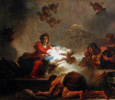 he gave Jean-Honoré Fragonard’s masterpiece L’Adoration des bergers (circa 1776) to the same museum. On March 30th, 1988, the French Minister of Culture decorated Roberto with the order of Commandeur des Arts et Lettres for his contributions to French art and culture. Pierre Rosenberg, Chief Curator of Paintings of the Musée du Louvre, wrote:
he gave Jean-Honoré Fragonard’s masterpiece L’Adoration des bergers (circa 1776) to the same museum. On March 30th, 1988, the French Minister of Culture decorated Roberto with the order of Commandeur des Arts et Lettres for his contributions to French art and culture. Pierre Rosenberg, Chief Curator of Paintings of the Musée du Louvre, wrote:
Throughout the 1980s, Roberto Polo made financial contributions to New York’s Sloan-Kettering Cancer Research Center, Save Venice Inc. and Casita María Center for Arts and Education, the oldest Hispanic charitable institution in America.
Roberto Polo is best-known as the bellwether of the art and jewellery markets. He buys today what others will buy tomorrow. He acquires art which was revolutionary in its time and later fell into oblivion as well as exceptional jewellery. For this reason, in 1994, Amy Page, Chief Editor of Art & Auction, wrote in the magazine’s Fifteenth Anniversary Issue that Roberto is one of the ten people who have made a difference in the art world over the past 15 years; in 2004, Valerie Duponchelle of Le Figaro titled an article about him The Eye; in 2006, Jeanne Faton, Chief Editor of L’Objet d’Art magazine, wrote that Roberto’s eye is as awesome as that of the mythological Gorgon; in 2007, Luise Aengeneynd of Weltkunst magazine titled an article about him The Trendsetter of the Art Market and Laurence Mouillefarine of French Architectural Digest magazine wrote that Roberto’s talent explores a universe ignored by the rest of the art market; and in 2009, Armelle Malvoisin of the newspaper, Le Journal des Arts, described the collections he formed as anthological, along with those of Jacques Doucet, Florence Gould, Arturo Lopez-Wilshaw, Hubert de Givenchy, the Duke and Duchess of Windsor, Jaime Ortiz-Patiño, Mr. and Mrs. John Hay Whitney, André Breton and Henry Ford II.
In 1988, Roberto Polo consigned for sale at auction eight extraordinary gems, all of which made record-breaking prices. Given the importance of these gems, this historic auction was divided into three sessions that took place at Sotheby’s in St. Moritz, Geneva and New York. The auction catalogue’s preface was written by Daniel Alcouffe, Chief Curator of Decorative Art of the Musée du Louvre. Alcouffe compared Roberto’s discerning eye for gems to those of Queen Victoria, Louis XV, Napoléon Ier, Charles X, the Duc de Berry, Prince Nicholas Esterhazy and Cardinal Mazarin.
 The 41.37-carat oblong cushion-shaped Golconda Ashoka Diamond set as a ring, bought in 1984 for $ 1 000 000 from the beautiful Mexican film star María Félix, sold for $ 3 850 000, the second highest auction price in history for a white diamond;
The 41.37-carat oblong cushion-shaped Golconda Ashoka Diamond set as a ring, bought in 1984 for $ 1 000 000 from the beautiful Mexican film star María Félix, sold for $ 3 850 000, the second highest auction price in history for a white diamond; the 62.02-carat step-cut Burmese Rockefeller Sapphire set as a ring, bought in 1985 for $ 1 200 000 from the New York jeweller and collector Ralph Esmerian, sold for $ 2 828 571, the highest auction price in history for a sapphire or any other kind of colored gem;
the 62.02-carat step-cut Burmese Rockefeller Sapphire set as a ring, bought in 1985 for $ 1 200 000 from the New York jeweller and collector Ralph Esmerian, sold for $ 2 828 571, the highest auction price in history for a sapphire or any other kind of colored gem;- the 14-carat fancy intense yellow marquise-shaped diamond set as a ring, bought in 1986 for $ 525 000 from Esmerian, sold for $ 1 178 571, the highest auction price in history for a fancy intense yellow diamond;
- the 20-carat Golconda step-cut fancy intense pink diamond set as a ring, bought in 1986 for $ 2 000 000 from the Geneva jeweller Theodore Horovitz, sold for $ 4 730 000, the highest auction price in history for a fancy intense pink diamond;
- the 22.52-carat Colombian step-cut emerald set as a ring, bought in 1986 for $ 800 000 from the New York jeweller Harry Winston, sold for $ 1 540 000, the highest auction price in history for an emerald;
- the 3.02-carat pear-shaped fancy intense green diamond set in a fancy intense pink diamond and white diamond necklace, bought in 1985 for $ 500 000 from Esmerian, sold for $ 1 705 000, the highest auction price in history for a fancy intense green diamond;
- the 8.93-carat pear-shaped fancy intense yellow-orange diamond set in a fancy intense pink diamond and white diamond pendant, bought in 1986 for $ 650 000 from Horovitz, sold for $ 1 885 714, the highest auction price in history for a fancy intense orange diamond;
- and the 5.57-carat pear-shaped fancy intense pink diamond set on a fancy intense pink diamond necklace, bought in 1985 for $ 550 000 from Esmerian, sold for $ 1 650 000, the new highest auction price in history for a fancy intense pink diamond.
Seven years later, in 1995, Nicholas Courtauld Rayner, Chairman of Sotheby’s in Geneva and Director of its International Jewellery Departments, prominent writer and lecturer on jewellery, wrote in Diamond Insight magazine:
Rayner further wrote:
Also in 1988, Roberto Polo consigned for sale at auction twenty-four French eighteenth-century paintings and drawings, half of which made record-breaking prices for the artists François Boucher, Jean-Siméon Chardin, Anne Vallayer-Coster, Jean-Honoré Fragonard, Adélaide Labille-Guiard, Nicolas de Largillièrre, Jean-Marc Nattier and Hubert Robert. This historic auction was conducted by Ader Picard Tajan in Paris, whose auction catalogue is now a collector’s item. Its preface was written by Pierre Rosenberg.
French eighteenth-century painting was not fashionable and was undervalued when Roberto was buying it. His talent lies in his ability to identify art market imbalances and transmitting his rare and profound knowledge of art history and theory.
Trials and tribulations: 1987-1995
By 1986, the international press incited panic among foreign investors by sensationalizing new American legislation requiring US-based investment advisors to disclose the identity of their foreign clients (Foreign Investment in the U.S. Is Too Secret, The New York Times, December 27, 1985.pdf, Increased Scrutiny of Foreign Investors Backed, The New York Times, May 9, 1986.pdf). Roberto Polo’s clients, all of whom were international high net worth individuals, asked him to move his investment advisory business to Switzerland in order to benefit from this country’s secrecy laws. Pursuant to his lawyers’ advice, to support his application for Swiss foreign resident status (First application for Swiss foreign resident status.pdf) and anticipating the launch of his business activities, Roberto incorporated PAMG S.A., a Swiss company inscribed in the Registry of Commerce as investment advisors specialized in art and jewellery, his fields of expertise (PAMG S.A. Registry of Commerce 1.pdf & PAMG S.A. Registry of Commerce 2.pdf). PAMG S.A.’s Articles of Incorporation and a sworn declaration from one of its directors confirm this business purpose (PAMG S.A. Articles of Incorporation.pdf & Baudouin Dunand Affidavit.pdf). Roberto opened PAMG S.A.’s bank account at Credit Suisse in Geneva, rented its office space and an apartment in the same city, and hired six Swiss employees. PAMG S.A.’s manager was Rosa’s cousin, Julio Cordero Espaillat.
Roberto Polo never moved to Geneva. His application for Swiss foreign resident status was twice denied, because the annual quota for foreign residents was met (Denial of first application for Swiss foreign resident status.pdf & Appeal to denial of Swiss foreign resident status.pdf). Indeed, it was very difficult to obtain Swiss foreign resident status at the time. The demand was so great that many important and qualified people were denied for the same reason as Roberto. Since he could not reside in Switzerland, Roberto continued to advise his clients out of his New York offices.
Roberto’s superior at Citibank had been a certain Alfredo Ortiz Murias, born in Puerto Rico. In 1986 Manhattan magazine quoted Ortiz in its twelfth issue:
Shamelessly, one year later, Ortiz accused Roberto of embezzling his clients’ funds by investing them in other than interest-bearing time deposits, i.e. in Jacob Frères Limited and Miguel Cruz.
Ortiz had resigned from Citibank in 1980, to create his investment advisory company, which was not successful. Feeling sorry for him, Roberto then committed the serious mistake of hiring Ortiz as a marketing officer. Ortiz befriended Rosa with whom he collaborated in several real estate transactions. As Roberto’s fame and wealth grew, so did Ortiz’ and Rosa’s complicity, and Roberto’s and Rosa’s matrimonial problems.
At the source of Roberto Polo’s judicial problems was his appearance of wealth and the envy that it generated. Due to his rare culture and refinement, he unwillingly appeared to live better than his extremely wealthy clients. Ortiz and Rosa used Roberto’s appearance of wealth as a weapon against him. In 1987, they urged Roberto’s clients to withdraw their funds immediately from his management by saying that he was embezzling from them in order to pay for his high standard of living. In the ensuing panic, one after another, in violation of their Investment Management Agreements, which gave Roberto one year to liquidate his clients’ investments and reimburse them, they demanded the immediate restitution of their funds (PAMG Inc., Investment Management Agreement, P. 2, clause F.pdf). In good faith and without any contractual obligation to do so, Roberto began to liquidate investments and reimburse his clients (Baudouin Dunand Affidavit.pdf).



On April 29th, 1988, Ortiz filed fraudulent criminal complaints on behalf of seven plaintiffs against Roberto with the Geneva investigating magistrate Vladimir Stemberger. Ortiz not only signed these complaints, but served as their sole witness. Irresponsibly, without first verifying the facts, Stemberger issued international arrest and extradition warrants against Roberto on the following day. Stemberger’s reckless behaviour had disastrous consequences for Roberto. The plaintiffs were two Mexicans, who had been Ortiz’ clients at Citibank and who he had brought to PAMG Inc.: Emilio Martínez Manautou, important politician, and Pablo Aramburuzabala Ocaranza, certain of his family members and business associates, owners of a beer brewery, Cerveceria Modelo. Roberto did not know these Mexicans before Ortiz brought them to PAMG Inc..
Stemberger’s warrants revolved around three false allegations:
- that PAMG S.A.’s bank account at Credit Suisse in Geneva had been credited with $ 120 million from or in favour of the plaintiffs;
- that the plaintiffs had authorized Roberto to invest their funds only in interest-bearing bank time deposits;
- and that PAMG S.A.’s six employees had unanimously declared to Stemberger that they either received Roberto’s instructions to erase this company’s computer discs and destroy its accounting records or that they saw him do so.
In flagrant violation of international extradition treaties and procedures, Stemberger did not attach any proof to his warrants in order to substantiate his foregoing false allegations. Without bearing the burden of proof, Roberto Polo produced all of PAMG S.A.’s bank account records from Credit Suisse in Geneva. These were examined by Deloitte & Touche SA, which established that PAMG S.A.’s bank account had not been credited with any funds from or in favour of the plaintiffs. Deloitte & Touche SA also established that, contrary to what Stemberger had fabricated in his arrest and extradition warrants, PAMG SA’s computer discs and accounting records were safe and sound in their possession (Deloitte & Touche SA Affidavit.pdf). Roberto further produced the Powers of Attorney (Powers of Attorney.pdf) granted to him by the plaintiffs, authorizing him to invest their funds on a discretionary basis and in other than interest-bearing bank time deposits. Finally, Roberto produced the sworn declarations of PAMG S.A.’s six employees, who unanimously stated that Stemberger had not interrogated them, that Roberto had not instructed them to erase PAMG S.A.’s computer discs and destroy its accounting records, or that they had seen him do so (PAMG S.A. employee Affidavits.pdf - Deloitte & Touche SA. employees Affidavit.pdf).
The fraudulence of the Swiss criminal complaints and Stemberger’s arrest and extradition warrants probably appear incredible to the uninitiated, like they first did to the noted Swiss investigating journalist Matthias Camenzind, who made the following sworn declaration on June 4th, 1993 (Matthias Camenzind Affidavit.pdf):
During the first five months of this year, I undertook a profound investigation of the extradition case of Roberto Polo, a US citizen whose extradition from the United States is sought by Switzerland. The most important weekly news magazine of the French-speaking part of Switzerland, “L’Hebdo”, published the investigative article which I wrote about Roberto Polo’s extradition case.
Because I believed firmly in the Swiss justice system and in the impartiality of its judges, it was difficult for me to believe in the early stages of my investigation that Roberto Polo’s extradition case is not a routine one. Only after having personally interviewed Robert Reger, Esq., of the New York law firm of Reid & Priest, who represents Emilio Martínez Manautou, former Governor of the state of Tamaulipas, México, did I realize that they filed a fraudulent criminal complaint against Roberto Polo in Geneva. During my personal interview of Robert Reger, he lied in a cold-blooded manner without any apparent sign of indisposition. He made false affirmations about matters of which I have first-hand knowledge and that I know are simply not true.
My personal interview of Robert Reger, together with some articles which I read about the tragic fate of a government opposition journalist in the state of Tamaulipas, who was assassinated, made me fear for my personal security. This frightful feeling intensified after interviewing the Swiss investigating magistrate Vladimir Stemberger. It was Vladimir Stemberger who issued Roberto Polo’s Extradition Warrant and Warrant to Convey at the request of Emilio Martínez Manautou and his attorneys.
During my personal interview, Vladimir Stemberger circomlocuted my questions and misrepresented facts of which I have first-hand knowledge. After I concluded interviewing Vladimir Stemberger it was perfectly clear to me that he does not even consider the possible innocence of Roberto Polo, which is for me a clear sign of partiality, to the prejudice of Roberto Polo. This is still my opinion.
After interviewing Vladimir Stemberger, I undertook to publish the results of my investigation as quickly as possible for fear of my personal security.
Roberto, Rosa and Marina had moved to Paris in 1986. From that moment on, Roberto stayed in hotels whenever he visited New York for business. Unbeknownst to Roberto and nearly seven months before Ortiz filed the fraudulent criminal complaints against him, Rosa put an elaborate and carefully premeditated scheme into action. She stripped the New York townhouse and Jacob Frères Limited of the most valuable works of art and moved them, using various pseudonyms, via Paris, first to Geneva and then to Zurich. In April 1988, twenty-two cases containing these works of art and insured for millions of dollars flew to Paris, where they were delivered to Mrs. Rosa Franco. In May of the same year, the twenty-two cases were trucked to Monsieur White at the Geneva Free Port from where they were further trucked to Rosa Suro Franco at the Zurich Free Port. Due to Swiss customs regulations, Rosa removed the works of art from this last destination before the end of May 1990. She paid in cash for the foregoing illicit services ( Rosa Polo's shipping documents.pdf).
Among the valuable works of art were several highly important pieces of porcelain-mounted furniture by Martin Carlin; a very rare verre églomisé-mounted fly-front desk by Charles Topino; a Neo-Etruscan music room seating set designed by Sir Lawrence Alma-Tadema in 1884, for Henry Gurdon Marquand, the first President of The Metropolitan Museum of Art; an extraordinary coffer mounted and incrusted in coral, mother-of-pearl and hardstones, created by the Trapani workshops in the seventeenth century; a fabulous pair of French eighteenth-century ebony cabinets mounted with gilt bronzes and hardstones, which had belonged to William Beckford; a pair of monumental bronze busts representing Saïd Abdallah and the Vénus africaine by Charles Cordier; and the most important private collection in the world of French eighteenth-century gilt bronze-mounted Chinese crackled celadons.
Many of these works of art later appeared for sale at auction and sold for stratospheric prices. For example, Roberto had bought the pair of Beckford cabinets for $ 183 040 at Sotheby’s (London) in 1984: it was sold for $ 1 571 940 at the same auction house in 1998. Roberto had bought a pair of French eighteenth-century gilt bronze-mounted Chinese crackled celadon pots-pourris for $ 120 000 at Galerie Aveline (Paris) in 1985: it was sold for € 2 272 250 at Sotheby’s (Paris) in 2008.
 Rosa also absconded with important gems and other assets. For example, the exquisite 178.1-carat white diamond snake necklace designed by Gabriel Raton and executed by Cartier for Maria Félix in 1968. Roberto had bought this necklace from Maria Félix for $ 250 000 in 1985. The necklace reappeared in exhibitions of Cartier’s private collections held in major museums throughout the world. To dissimulate her ill-acquired wealth, Rosa played the victim before the world, pretending that Roberto had left her and Marina financially destitute.
Rosa also absconded with important gems and other assets. For example, the exquisite 178.1-carat white diamond snake necklace designed by Gabriel Raton and executed by Cartier for Maria Félix in 1968. Roberto had bought this necklace from Maria Félix for $ 250 000 in 1985. The necklace reappeared in exhibitions of Cartier’s private collections held in major museums throughout the world. To dissimulate her ill-acquired wealth, Rosa played the victim before the world, pretending that Roberto had left her and Marina financially destitute.
Rosa was not the only one who profited from Roberto’s misery. For example, a few years before his trials and tribulations, Roberto had consigned for sale many works of art to Bob and Cheska Vallois, owners of Galerie Vallois in Paris. These works of art included three important paintings by Kees van Dongen, which Roberto bought on October 14th, 1986 for $ 1 million from the artist’s last widow, Marie-Claire van Dongen. These paintings are titled L’Acrobate (1905), Grand nu blond fond fauve (1906) and Madame “G” dite l’artiste (1908). In December 1987, L’Officiel Hommes magazine published a photograph of Roberto seated in front of L’Acrobate and Grand nu blond fond fauve in his Paris apartment. In 1989, while Roberto was incarcerated, the Dutch photographer, René Stoeltie, photographed the
 Vallois’ Paris apartment at 22 rue de Seine for the Dutch magazine Eigen Huis & Interieur, which published the photographs in the same year. Shockingly, one of Stoeltie’s photographs shows Madame “G” dite l’artiste on display in the Vallois’ bedroom.
Vallois’ Paris apartment at 22 rue de Seine for the Dutch magazine Eigen Huis & Interieur, which published the photographs in the same year. Shockingly, one of Stoeltie’s photographs shows Madame “G” dite l’artiste on display in the Vallois’ bedroom.
When Roberto was released from prison in 1995, he returned to Paris where he met with Bob Vallois and asked him to either to return the paintings or pay him for them. Vallois refused. Sometime later, however, he met with Roberto and proposed to pay him 400 000 French francs (nearly € 61 000) in cash, which he carried in a shopping bag, if Roberto released him from any further liability. Roberto rejected this proposition: the paintings had a much higher value and he would not accept an illegal payment.
Subsequently, Roberto saw television news coverage about L’Acrobate and Grand nu blond fond fauve, which had been recovered by the police after they were stolen from the Paris Place des Vosges apartment of a certain WS, one of the owners of a French fashion boutique chain. Roberto and a friend visited WS, who admitted that he had recovered his stolen paintings from the police and proposed to pay Roberto 1 million French francs (over € 152 000) in cash if he released him from any further liability: Roberto rejected this proposition for the same reason that he rejected the one made by Bob Vallois. WS confessed that he could not pursue Bob and Cheska Vallois legally: he had paid them for these paintings in Switzerland and with money which he had not declared to the French tax authorities. L’Acrobate appeared at auction in Sotheby’s (New York) in 2006 and sold for $ 4 384 000, a new record price for a painting by van Dongen. Madame “G” dite l’artiste appeared at auction in Loudmer Scp. on June 16th, 1990 and sold for 920 000 French francs ($ 161 545), a new record price for a work on paper by this same artist.
When he consigned the three foregoing paintings to Bob and Cheska Vallois, Roberto also consigned to them many other works of art, including a center table, low table, dressing table and its chair, and a desk by Jacques-Emile Ruhlman; an armchair and a table by Sue et Mare; and the mould for an important bronze sculpture by Gustave Miklos (Consignment receipt from Galerie Vallois.pdf). Bob and Cheska Vallois neither returned these works of art to Roberto nor paid him for them.
On June 24th, 1988, as a result of Stemberger’s lying arrest and extradition warrants, Roberto Polo was arrested in Italy. He was incarcerated in the fourteenth century prison in Lucca, Casa Circondariale San Giorgio, where he was held in solitary confinement for over three months: naked, he slept on the cement floor, urinated and defecated in a hole made for these purposes in the centre of the cell and was whipped (he still bears the scars on his back as testimony). He constantly protected his genitals with his hands out of fear of being harmed by the cat-sized rats which infected the prison. These cruelties were inflicted upon Roberto to force him to transfer his property to the greedy plaintiffs. He courageously did not do so. Thanks to his family’s threats to the authorities of publicizing Roberto’s dire circumstances and to the intervention of the American Consul in Florence, Virginia Morris, he was transferred from solitary confinement to the community of other inmates at the same prison. Roberto was then taken to the prison in Pisa, Casa Circondariale Don Bosco, where he became anorexic. He measures 181cm. (five feet nine) tall and weighed 40 kilograms (88 pounds). Due to his illness, Roberto was moved to the prison’s hospital, but since his health continued to deteriorate, on November 24th, 1988, the court ordered the police to take him to the nutritional disorders department of the university hospital, Ospedale Careggi, in Florence. Instead, they took him to the lunatic asylum of the same establishment, where he remained in a straightjacket for five days with four policemen constantly surveying him. Thanks to an anonymous telephone call from one of these policemen, Roberto’s parents learned of his plight. On November 29th, 1988, Roberto’s lawyers obtained a court order to move him to the nutritional disorders department of the same hospital, from which he was released on bail on January 9th, 1989.
On December 16th, 1988, an article titled Disfatto ad arte by the well-known Italian investigative journalist, Enrico Mannucci, had appeared in the Milanese magazine Europeo. Mannucci quoted Francesco Fleury, the General Prosecutor of Florence responsible for Roberto’s extradition case in Italy, who at a preliminary hearing stated:
It would not be a bad idea for the Swiss to investigate this case further and to provide us with concrete proof. Instead, they have limited themselves to putting undue pressures on the Ministry of Justice in Rome to keep Polo in prison even beyond the time limits allowed by Italian law in cases of this kind.
Consul Morris was largely responsible for Roberto Polo’s release. She had investigated his case and found that Roberto’s detention was unwarranted. When he was released, out of mistrust of the judicial authorities, Roberto fled Italy for Greece with a passport given to him for this purpose by a well-known French journalist, who had investigated his case and become his friend. Roberto lived between Athens and the village of Oeia on the Cycladic island of Santorini until 1990, when Consul Morris encouraged him to return home to America. On August 31st, 1990, at Consul Morris’ request, the American Consul in Athens, Anne K. Cusick, issued Roberto a new passport. Accompanied by one of his American lawyers, he flew to Miami on September 7th, 1990. In Greece, Roberto had worked on his defence and painted.
During Roberto’s Italian detention, the plaintiffs had cunningly filed civil suits against him in New York for $ 120 million. He was notified of the hearing at his last American address, his New York townhouse, where only Rosa’s brother, Federico, lived. Not surprisingly, Roberto was not informed of this notification. For this reason, in 1989, because he was neither present nor represented at the hearing, the suits concluded in civil default judgements for the same amount, against him and in favour of the plaintiffs. Whereas in the Swiss criminal complaints, the plaintiffs alleged that they had transferred $ 120 million to PAMG S.A.’s bank account in Geneva, in the American civil complaints, they alleged that they had transferred the same amount to PAMG Inc.’s bank account in New York. Neither in Geneva nor in New York did the plaintiffs attach a single bank record to substantiate their fraudulent complaints.
Roberto’s art and jewellery investments proved extremely profitable for the plaintiffs. For example, in 1989, by the ruthless application of the New York civil default judgements, they seized and sold at Sotheby’s (New York), one-hundred and forty-four lots of decorative art from the exquisite collections Roberto had formed. Many of these lots made record-breaking prices. However, the highlights of the auction were: a Louis XV rhinoceros clock, bought in 1984 for $ 132 300 from the Sotheby’s (Monte-Carlo) auction of the Florence Gould collection and sold for $ 660 000; a Louis XV tulipwood parquetry commode mounted with gilt bronzes and attributed to Charles Cressent from the collection of Bernice Chrysler Garbisch, bought in 1980 for $ 165 000 from Sotheby’s (New York) and sold for $ 687 500; a Venetian lacca povera writing cabinet, bought in 1984 for $ 281 600 from Sotheby’s (London) and sold for $ 1 210 000; a transitional tulipwood and sycamore parquetry commode mounted with gilt bronzes delivered by Gilles Joubert to the Château de Fontainebleau in 1771, for the cabinet de retraite of the Comtesse de Provence, bought in 1984 for $ 172 700 from Sotheby’s (New York) and sold for $ 687 500 – this commode reappeared at Christie’s (New York) in the year 2000 and sold for $ 1 491 000; and a Louis XVI giltwood console, bought in 1985 for $ 200 000 from the antiques dealer Bernard Steinitz (Paris) and sold for $ 1 320 000.
In January 1990, without consulting Roberto, Steinitz bought two advertising pages in several international art and antiques magazines including Connoisseur. He tastelessly titled his advertisement How to make a fast $ 1 000 000 and reproduced Roberto’s purchase invoice for the Louis XVI giltwood console together with the price which it had made at auction.
In 1991, the plaintiffs, again by the ruthless application of the New York civil default judgements, seized and sold at the Paris auctioneers Ader Tajan, one-hundred and sixty-three lots of decorative and fine art from the extraordinary collections formed by Roberto. Many of these lots made record-breaking prices. However, the highlights of the auction were a small rosewood veneer and Sèvres porcelain-mounted commode by Martin Carlin from the collections of Baron Alphonse de Rothschild, bought in 1986 for $ 900 000 from Galerie Aveline (Paris) and sold for $ 3 000 000, the highest auction price in history for a piece of French furniture; a rosewood veneer and Sévres porcelain-mounted jewellery coffer commissioned by Marie-Antoinette from Martin Carlin, bought in 1986 for $ 700 000 from the Iranian collector Habib Sabet and sold for $ 5 000 000, the new highest auction price in history for a piece of French furniture, a record that was not broken until 2007; a pair of French eighteenth-century gilt bronze-mounted Chinese grey crackled celadon ewers, bought from the same preceding vendor and in the same year for $ 120 000 and sold for over $ 700 000; and a painting by Kees van Dongen titled La baigneuse, Deauville (1920), bought in 1985 for $ 200 000 from art dealer Jacques Chalom Descordes and sold for over $ 1 100 000, the highest auction price in history for a work by this artist. However, a baby grand piano designed by the fashionable 1930s French decorator, Jean-Michel Frank, and a life-size portrait sculpture of Rosa and Marina Polo by Marisol, one of the most important sculptors of the American Pop Art movement, were catalogued as anonymous by this auction’s experts, Marie Aline Prat and Jean-Pierre Camard, and sold for a pittance. The portrait sculpture of Rosa and Marina Polo was bought by Chalom on Rosa’s behalf at the auction for almost $ 48 000, because for obvious reasons, she could not bid for it publicly.
In 1990, Roberto Polo returned to America, where he settled near his family in Miami. The following year, Rosa proposed to allow Marina to visit Roberto on one condition: that he agree not to pursue Rosa for absconding with his property. Roberto refused. He continued to work on his defence. His work as an artist helped to alleviate his profound suffering. Roberto’s major solo exhibition of this period took place at the Fort Lauderdale Museum of Art from April 10th to June 7th, 1992. This exhibition consisted mostly of large format mixed media works on aluminium and wood. Art in America, Artforum and other magazines covered this exhibition.
As a result of Stemberger’s scurrilous arrest and extradition warrants, Roberto was re-arrested on April 27th, 1992, and incarcerated in Miami’s Metropolitan Correctional Center (MCC), where he became prisoner number 38148-004 and worked first gathering cigarette butts, and then as a librarian. The illegality of these circumstances appalled many Americans. The Miami Herald, the fifth most important daily newspaper in the US, published two editorials protesting Roberto’s extradition case: In prison, and for what? and Set Roberto Polo free. Armando Valladares, former American Ambassador to The Human Rights Commission in Geneva, and Roberto’s mother,  formed a committee called Citizens against the Extradition of Roberto Polo, which gathered over ten-thousand demonstrators in front of The White House and established a hotline triggering thousands of protest telegrams to President Bill Clinton. This committee, formed of congressmen, mayors, outstanding and ordinary citizens, also obtained over a hundred-thousand signatures protesting Roberto’s extradition. (Armando Valladares biography and letter from Valladares to President François Mitterrand.pdf - Citizens against the Extradition of Roberto Polo advertising.pdf)
formed a committee called Citizens against the Extradition of Roberto Polo, which gathered over ten-thousand demonstrators in front of The White House and established a hotline triggering thousands of protest telegrams to President Bill Clinton. This committee, formed of congressmen, mayors, outstanding and ordinary citizens, also obtained over a hundred-thousand signatures protesting Roberto’s extradition. (Armando Valladares biography and letter from Valladares to President François Mitterrand.pdf - Citizens against the Extradition of Roberto Polo advertising.pdf)
Roberto Polo defended himself against Stemberger’s arrest and extradition warrants under trying circumstances: Hurricane Andrew struck and destroyed MCC and the neighbouring Miami Metro Zoo. The prisoners saw the wild animals roaming around them. MCC was evacuated. The prisoners were chained, ankle and hand-cuffed, and bussed to other prisons throughout the country. They were transferred in these conditions nightly, sleepless and never knowing where they would find themselves on the following day. As MCC was gradually rehabilitated, the prisoners were repatriated.
On the basis of new and strong evidence, Federal Judge Federico Moreno granted bail to Roberto Polo on June 2nd, 1993. This evidence consisted mainly of a recorded interview of Stemberger conducted by two Swiss investigative journalists, Matthias Camenzind and Alain Walther. In this interview, Stemberger confessed that he had neither interrogated PAMG S.A.’s six employees nor examined its bank account records. Judge Moreno’s ruling was surprising, because Roberto had not requested bail, given the strong presumption against it in extradition cases. Judge Moreno stated that he based his ruling on:
Despite Judge Moreno’s ruling, Roberto was not released: the US prosecutor representing Switzerland, William K. Hoyt Jr., filed an appeal immediately after Judge Moreno pronounced his ruling.
On August 31st, 1993, at three o’clock in the morning, while his extradition case was still on appeal, Roberto Castro Polo, an American citizen, who had not been indicted or convicted of a crime anywhere, was secretly removed from his cell at MCC by two US marshalls, transferred to a cell at the Federal Courthouse in Miami and then taken to the Miami International Airport, where he was delivered, dressed like a derelict and barefoot, to two Swiss policemen, who put him on a Swissair flight to Geneva via Atlanta and Zurich. After suffering this new illegal experience, Roberto swore never again to set foot on American soil. Despite his desire to see old and new friends, and the invitations from important American museums and collectors, he has kept his personal oath not to return to a country which betrayed his trust and citizenship. However, there are those who either believe falsely that he cannot return to the US, or who perpetrate the rumour that he cannot do so in order to discredit him. Roberto has never been pursued by the American judicial authorities, he renews his American passport every ten years at the American Consulate and files his tax returns in the US. There are no warrants or legal reasons that keep Roberto from returning to the US.
Roberto Polo’s extradition to Switzerland was illegal for many reasons that are impossible to enumerate here. Suffice it to say, that the bilateral extradition treaty between the US and Switzerland explicitly excluded the extradition of nationals from their own country. Switzerland and the US had never extradited one of its citizens. Roberto was the first American citizen in history extradited from the US. Moreover, the extradition treaty provided only for the extradition of foreign indicted or convicted criminals: Roberto was neither a foreigner nor had he been indicted or convicted of a crime anywhere. In another violation of the same extradition treaty, Roberto was put on a flight to Switzerland without the required Certificate of Extradition signed by the US Secretary of State, Warren Christopher (Extradition Treaty between The United States and Switzerland.pdf). In violation of American law, Roberto was extradited while his extradition case was still on appeal.
Stemberger indicted Roberto on September 2nd, 1993. He insured that Roberto had spent nearly four years in prison before taking him to trial in order to give him the appearance of guilt before the court (Les mystéres de la détention préventive, Tribune de Genève, March 3, 1992.pdf). Stemberger flagrantly violated Swiss law and rules of legal proceedings before and after Roberto’s arrival. For example, Stemberger authorized the plaintiffs’ Swiss and American lawyers to access the case files and photo-copy documents therein before Roberto arrived in Switzerland, having denied this same request to Roberto’s Swiss lawyers (Correspondence between Me. Marc Bonnant and Investigating Magistrate Vladimir Stemberger, and Me. Matteo Pedrazzini's recusal request.pdf). In a financial case, where an accounting is essential, Stemberger denied Roberto’s reasonable request to establish an accounting of his personal earnings in order to prove that he had ample financial means to lead the lifestyle that the plaintiffs reproached him. Clearly, Stemberger did not want to establish the proof of Roberto’s innocence.
On March 17th, 1995, the feeble Swiss prosecutor, Laurent-Kasper Ansermet, formally charged Roberto Polo. To justify the over $ 120 million in assets, which the plaintiffs had seized over four years earlier by the ruthless application of the New York civil default judgements, Ansermet used PAMG S.A.’s bank records, incredibly adding Italian liras and French francs as dollars, and debits as credits. In the over seven years of judicial proceedings, the plaintiffs had not produced a single bank record to substantiate their false allegations of transferring $ 120 million to PAMG S.A.’s bank account in Geneva and PAMG Inc.’s bank account in New York. Moreover, as stated above, Deloitte & Touche SA had examined PAMG S.A.’s bank records and established that this company’s bank account had not received any funds from or in favour of the plaintiffs.
As a result of the fraudulent criminal complaints filed by Ortiz on behalf of the plaintiffs, Roberto was bulldozered in a rigged trial in the Geneva Cour d’Assises. The trial began on Monday, June 12th, 1995, and lasted five days. By this date, he had spent four years in prison: twenty months of preventive detention in Switzerland and twenty-eight months of extraditional detention in Italy and America. Roberto was taken to trial in this high court, not because his case justified it, but rather, because when tried in it, the accused is presumed guilty, and when convicted, he does not have the right to appeal the facts.
Rosa was the only witness for the prosecution at Roberto Polo’s trial. This was illegal, given that the law did not allow married or divorced spouses to testify against one another. When the President of the Cour d’Assises, Antoinette Stalder, addressed Rosa as Madame Polo and asked her to take the stand, Rosa replied: I am not Madame Polo since last Friday. Rosa had obtained the divorce from Roberto unilaterally, on the basis that he had abandoned their home, when, in fact, she had orchestrated his arrest.
The trial in the Cour d’Assises was a farce, because many years before the plaintiffs had already seized and liquidated all of Roberto’s assets (except those which Rosa had absconded with) by the application of the New York civil default judgements. These assets far exceeded $120 million in value. The plaintiffs were able to apply the New York civil default judgements ruthlessly, because, unbelievably, no country had ever required them to account for the assets which they had seized and liquidated in other countries.
Only one of the seven plaintiffs appeared at the trial in the Cour d’Assises: Martínez. The others were conspicuously absent. Interrogated by the defence, Martínez, his black-dyed hair dripping in the heat of the courtroom, could neither explain the source of his fortune nor why he could not produce a single bank record to substantiate his financial allegations. When the defence asked him why he had suppressed the Power of Attorney, which he had granted Roberto, he replied that this document was not important. However, this was the very document which gave Roberto Martínez’ authorization to invest his funds on a discretionary basis and in other than interest-bearing bank time deposits.
Stemberger had conducted a sham case investigation. He summoned Roberto Polo to his office almost daily to speak often about subjects that did not concern the case. Stemberger had to pretend that he was conducting a case investigation to keep Roberto in prison until judgement day. During the trial, Ansermet and the defence complained constantly to Stalder about the enormous loopholes left by Stemberger’s case investigation. Stalder repeatedly retorted:
Of course, Stalder had to convict Roberto in order to justify the assets which the plaintiffs had already seized from him over four years before by the ruthless application of the New York civil default judgements and which were now irrecoverable. After the trial in the Cour d’Assises, several members of the jury stated to the press, members of Roberto’s family and friends that Stalder had been present during their deliberation and instructed them to convict Roberto.
Immorally, Stalder convicted Roberto of Abus de confiance. The Swiss definition of this criminal offence is equivalent to a US civil infraction called Misinvestment of Funds. According to Stalder, Roberto had committed this offence when he invested, in other than interest-bearing bank time deposits, the $ 120 million which the plaintiffs allegedly transferred to PAMG S.A.’s bank account at Credit Suisse in Geneva. However, Stalder’s ruling was based on two false premises. First, the sworn declaration of Deloitte & Touche SA and annexed bank records prove that PAMG S.A.’s bank account at Credit Suisse in Geneva had never been credited with $ 120 million or any other funds from or in favour of the plaintiffs. As stated above, in the over seven years of judicial proceedings that had transpired, the plaintiffs did not produce a single bank record to substantiate their fraudulent complaints. Second, the Powers of Attorney which the plaintiffs had granted to Roberto prove that he was authorized to invest their funds on a discretionary basis and in other than interest-bearing bank time deposits.
The plaintiffs had suppressed the Powers of Attorney when they filed their fraudulent criminal complaints against Roberto Polo. However, when Roberto produced these crucial documents in the judicial proceedings, the plaintiffs had to admit them. As the accused, Roberto had not borne the burden of proof. Nevertheless, he proved that all the allegations made against him were false. In order to convict Roberto, Stalder unethically ignored the Powers of Attorney and the sworn declaration of Deloitte & Touche SA. She simply pretended, without scruples, that they did not exist. Thus, Roberto was condemned to serve a prison term of four years to justify the fact that he had already served it in extraditional and preventive detention. Although he did not have the right to appeal Stalder’s immoral ruling, he did so out of principle. His appeal was rejected on the archaic Roman law notion that the Cour d’Assises is infallible.
To add to the surreal nature of this story, Stalder formally released Roberto on Friday, June 16th, 1995, the last day of his trial, but hypocritically invited him to spend until the following Tuesday in prison with his cell door open: she preferred that another court, La Chambre d’accusation, physically release him. Upon hearing this ignominy, Roberto stood and told Stalder that as long as he remained in prison, his cell door would stay closed like those of other prisoners.
Contrary to the agreement made between La Chambre d’accusation and Roberto Polo’s lawyers to escort him and his family to the Italian frontier, the police hustled him through a secret hallway of the courthouse to the airport and put him on a flight to Rome without any money. His parents and brother resided in Asolo in the region of Venice, far from the Italian capital. Upon his arrival in Rome, Roberto was immediately re-arrested as he exited the aircraft: Stemberger had forgotten to rescind the arrest and extradition warrants which he had issued against Roberto over seven years before and which had now been executed, given that Roberto had already been arrested, tried and released. The Swiss press wrote mockingly of Stemberger and this additional embarrassing event of the Polo case for the Geneva judicial authorities.
Paris again: 1995-2007
Now free, Roberto Polo stayed with his family in Asolo until September 1995, when he returned to his beloved Paris with the moral and financial assistance of his family and friends. Paris had changed dramatically since he had left it in 1988. The new Paris was economically depressed and morose. Strikes ruled people’s lives and anonymous denunciations to the tax and other authorities were rampant. Roberto was sheltered for months in a Saint-Germain-des-Prés hotel by a friend who was its manager until he earned the necessary funds to rent his own lodging.
 Roberto Polo worked as an artist until 1998, exhibiting his work in important European and American galleries, including the Galerie Enrico Navarra in Paris, which published a catalogue with an introduction written by Serge Aboukrat, noted French collector of contemporary art and photography; Ramis Barquet Gallery in New York, which published a catalogue with laudatory introductions written by Jean-Luc Monterosso, Director of La Maison Européenne de la photographie and of the Mois de la Photo in Paris, and by Madame Jacques-Henri Lartigue, widow of the great French photographer; and Galleria Dante Vecchiato in Padova and Vicenza, which published a catalogue with an introduction written by the well-known Italian critic of contemporary art, Gianni Romano. Roberto’s work during this period consisted of manipulated Polaroids and Fresson prints, and photographic collages composed of non-figurative Polaroids and Fresson prints. This work exorcised his years of confinement. The international art press, including Art in America, Artforum, Beaux-Arts, Flash Art and Arte in praised these exhibitions.
Roberto Polo worked as an artist until 1998, exhibiting his work in important European and American galleries, including the Galerie Enrico Navarra in Paris, which published a catalogue with an introduction written by Serge Aboukrat, noted French collector of contemporary art and photography; Ramis Barquet Gallery in New York, which published a catalogue with laudatory introductions written by Jean-Luc Monterosso, Director of La Maison Européenne de la photographie and of the Mois de la Photo in Paris, and by Madame Jacques-Henri Lartigue, widow of the great French photographer; and Galleria Dante Vecchiato in Padova and Vicenza, which published a catalogue with an introduction written by the well-known Italian critic of contemporary art, Gianni Romano. Roberto’s work during this period consisted of manipulated Polaroids and Fresson prints, and photographic collages composed of non-figurative Polaroids and Fresson prints. This work exorcised his years of confinement. The international art press, including Art in America, Artforum, Beaux-Arts, Flash Art and Arte in praised these exhibitions.
Roberto lived in dire financial straits, struggling to earn his living as an artist while paying important legal bills. He felt constrained to return to the world of business as an art and jewellery investment advisor. Many good and important friends encouraged him to do so. He began advising, buying and selling for his old clients. He made new clients, especially museums, which found Roberto a trustworthy and knowledgeable source of the very best objects. Béatrice Salmon, Director of the Musée des Arts Décoratifs in Paris, stated to Departures magazine in 2007:
Roberto is not only an art dealer, he is also an art historian, so we can speak with him as we speak to another curator.
Kathryn Hiesinger, Chief Curator of European Decorative Art of the Philadelphia Museum of Art, stated to ForbesLife magazine in 2009:
Roberto is a brilliant and enigmatic collector, he is a giant of the profession. He has maybe the best eye in the business. He had it as a collector and he has it as a dealer. Roberto is a man deeply in love with objects – he is a kind of cult figure.
Roberto Polo’s depth of knowledge, refined aesthetic eye and passion for art helped him return to the world that he loved. Many saw this, including Philippe Garner, British art historian and expert, who in 2006, told Christopher Mason of The New York Times that Roberto is the wonderful phoenix of the art market. Ralf Eibel of German Architectural Digest magazine, in 2008, titled an article about Roberto The Phoenix of the Art Market.
True to himself, Roberto Polo continued to prove that it was a solid art investment policy to invest exclusively in what was modern in its time and unfashionable today. As he did in the 1980s for French eighteenth-century art, in the late 1990s, he created a flourishing market for French decorative art of the second half of the nineteenth century. After the year 2000, he did the same for European historical design.
In 2004, Roberto Polo wrote two anthological articles on Edouard Lièvre, which appeared in the prestigious magazines L’Objet d’Art and Connaissance des Arts. In the same year, Roberto curated the Edouard Lièvre retrospective exhibition that was held at the sumptuous Galerie Camoin-Demachy in Paris. The international press hailed this exhibition. Lièvre was the most important French designer of decorative art in the second half of the nineteenth century. Roberto was the main protagonist of important articles on the Viennese Secession, Gustave Serrurier-Bovy, Eileen Gray and Modernism.

Roberto was re-born as a philanthropist in 1997, when he gave several photographs by his good friend, Deborah Turbeville, to La Maison européenne de la photographie. In 1981, he had incorporated Polo Editions Inc. to publish a limited edition portfolio of her series of photographs titled Unseen Versailles with a preface by Louis Auchincloss. In the 1980s, Deborah had often photographed Roberto and Rosa in her characteristically enigmatic style.  In 2006, Roberto gave an exceptional Neo-Japanese patinated bronze planter-on-stand designed by Lièvre and executed by Ferdinand Barbedienne to the Musée des Arts Décoratifs in Paris, where he became a major benefactor. A few years before this important museum re-opened, its Director asked Roberto to advice its curator of nineteenth century decorative art, Odile Nouvel-Kemmerer, in completing the museum’s collections.
In 2006, Roberto gave an exceptional Neo-Japanese patinated bronze planter-on-stand designed by Lièvre and executed by Ferdinand Barbedienne to the Musée des Arts Décoratifs in Paris, where he became a major benefactor. A few years before this important museum re-opened, its Director asked Roberto to advice its curator of nineteenth century decorative art, Odile Nouvel-Kemmerer, in completing the museum’s collections.
In 2006, Roberto Polo was appointed Artistic Advisor of Galerie Historismus in Paris, referred to by the international press as the new museum gallery. This soberly decorated art gallery, which explored European historical design from 1840 to 1940, was located in the landmark Hôtel des Chaulnes on the magnificent Place des Vosges.




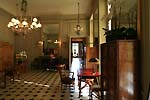
Roberto curated several exhibitions for this gallery: among them were Conflicts and Resolutions, about the evolution of the European Avant-Garde in the 1910s and 1920s; and Eileen Gray: 60 Works on Paper, the first exhibition of this artist’s pictorial work, featuring collages, gouaches and photographs. During its over two years of existence, Galerie Historismus published four exceptional catalogues with introductions written by Roberto. These catalogues are now, not only collector’s items, but also reference books on historical design. Galerie Historismus closed in April 2009. Paris proved to be neither a profitable nor a pleasurable place to conduct business, due to its high expenses, the penury of French collectors for foreign decorative art and the relentless sabotage of an influential, but twisted Parisian decorator, a close friend of Bob and Cheska Vallois, who continues to use Roberto’s unjustly soiled past in order to defame him.











Brussels: 2007-Present
Roberto Polo moved to Brussels in January 2007. This move was prompted by a meeting with an old French friend who had resided in Brussels for many years and described its advantages. Roberto felt stifled by Parisian ethnocentricity and intrigue. Brussels was a natural choice for Roberto, who has defended late nineteenth and early twentieth century Belgian art for many years.







In a recent press interview, Roberto said:
 In December 2009, as a tribute to Roberto Polo’s passion for Henry van de Velde, the first of six volumes of this great artist’s catalogue raisonné was introduced in a new Galerie Historismus, the only gallery thanked for its collaboration by its authors Dr. Thomas Föhl and Antje Neuman. Roberto is the Artistic Advisor of this new gallery, which counts among its best clients, not only private collectors, but also many important museums.
In December 2009, as a tribute to Roberto Polo’s passion for Henry van de Velde, the first of six volumes of this great artist’s catalogue raisonné was introduced in a new Galerie Historismus, the only gallery thanked for its collaboration by its authors Dr. Thomas Föhl and Antje Neuman. Roberto is the Artistic Advisor of this new gallery, which counts among its best clients, not only private collectors, but also many important museums.
Roberto Polo: The Eye
In 2011, Frances Lincoln Limited, London, published a 688-page art book entitled Roberto Polo: The Eye, authored by the reputed museum curators and professors Werner Adriaenssens, Daniel Alcouffe, Françoise Aubry, Thomas Föhl, Guido Giovannini-Torelli, Léon Lock, and Odile Nouvel-Kammerer. This book explores Roberto Polo's visual evolution through a selection of over three hundred masterpieces spanning four centuries and magnificent gemstones from the extraordinary collections which he has formed. Illustrated with over four hundred colour photographs this book is a fascinating insight into the man described by Art & Auction as ‘one of the ten people who have made a difference in the art market’ and an illuminating account of his forty years of collecting activity.
For further information and pre-orders visit www.roberto-polo-the-eye.com
Post-Factum
Marina is twenty-seven. She studied fashion design at Central Saint Martins College of Art & Design in London and designs an important women’s ready-to-wear collection in New York. In 1996, the psychologist appointed by the court in Paris wrote that Marina would not confess her love for her father out of fear of her mother. In August 2009, after twenty-three years of estrangement, Marina finally responded to one of her father’s many letters and proposed to meet him. Marina met her father in September 2009, in Paris. Toward the end of their reunion, she asked her father to meet her again on the following day, when she introduced him to her partner, a rising American stage and film actor with whom she has shared her life for over six years.
Alfredo Ortiz Murias died of AIDS in 1989. Pablo Aramburuzabala Ocaranza died of lung cancer in 1995. Emilio Martínez Manautou’s death date is uncertain. According to the Mexican press, he died mysteriously in the company of one domestic servant and hundreds of pedigreed cats; was virtually abandoned by his family and the hundreds of politicians who he helped to amass fortunes by the abuse of power; and was found buried in a terrain covered with débris, in a meagre wooden casket, in his Tamaulipas ranch El Mezquite. 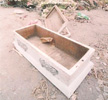 Rosa reportedly lives in London with Nathan Meyohas, a seventy-three year old Turkish lawyer, who was indicted for embezzlement by the French investigating magistrate Eva Joly in 1996, and acquitted in 2003. Marina believes that she and her mother survived financially thanks to him.
Rosa reportedly lives in London with Nathan Meyohas, a seventy-three year old Turkish lawyer, who was indicted for embezzlement by the French investigating magistrate Eva Joly in 1996, and acquitted in 2003. Marina believes that she and her mother survived financially thanks to him.
The flowing waters do not carry away the bright moon’s reflection on the river.



